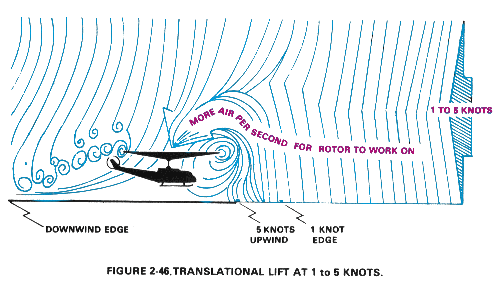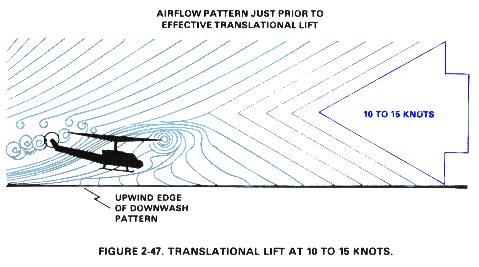
Improved rotor efficience resulting from directional flight is called translational lift. The following picture shows an airflow pattern at airspeeds between 1-5 knots:

Note how the downwind vortex is beginning to dissipate and induced flow down through the rear of the rotor disk is more horizontal than at a hover.
This next picture shows the airflow pattern at a speed of 10-15 knots. Airflow is much more horizontal than at a hover. The leading edge of the downwash pattern is being overrun and is well back under the helicopter nose. At about 16 to 24 knots (depending upon the size, blade area, and RPM of the rotor system) the rotor completely outruns the recirculation of old vortexes, and begins to work in relatively clean air:

The air passing through the rotor system is nearly horizontal, depending on helicopter forward air speed.
As the helicopter speed increases, translational lift becomes more effective and causes the nose to rise, or pitch up (sometimes called blowback). This tendency is caused by the combined effects of dissymmetry of lift and transverse flow. Pilots must correct for this tendency in order to maintain a constant rotor disk attitude that will move the helicopter through the speed range where blowback occurs. If the nose is permitted to pitch up while passing through this speed range, the aircraft may also tend to roll to the right.
When the single main rotor helicopter transitions from hover to forward flight, the tail rotor becomes more aerodynamically efficient. Efficiency increases because the tail rotor works in progressively less turbulent air as speed increases. As tail rotor efficiency improves, more thrust is produced. This causes the aircraft nose to yaw left if the main rotor turns counterclockwise. During a takeoff where power is constant, the pilot must apply right pedal as speed increases to correct for the left yaw tendency.